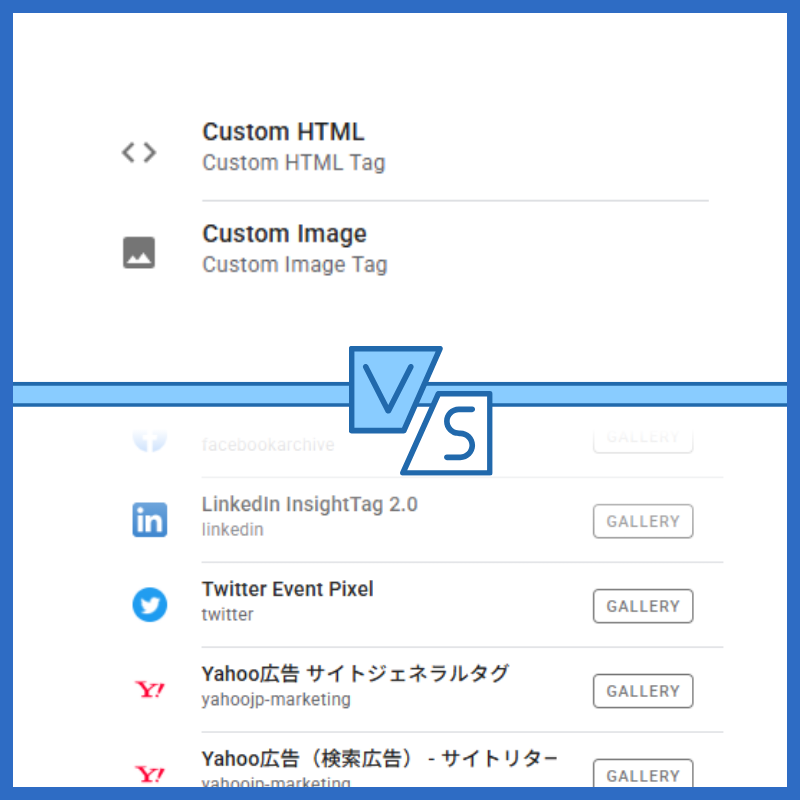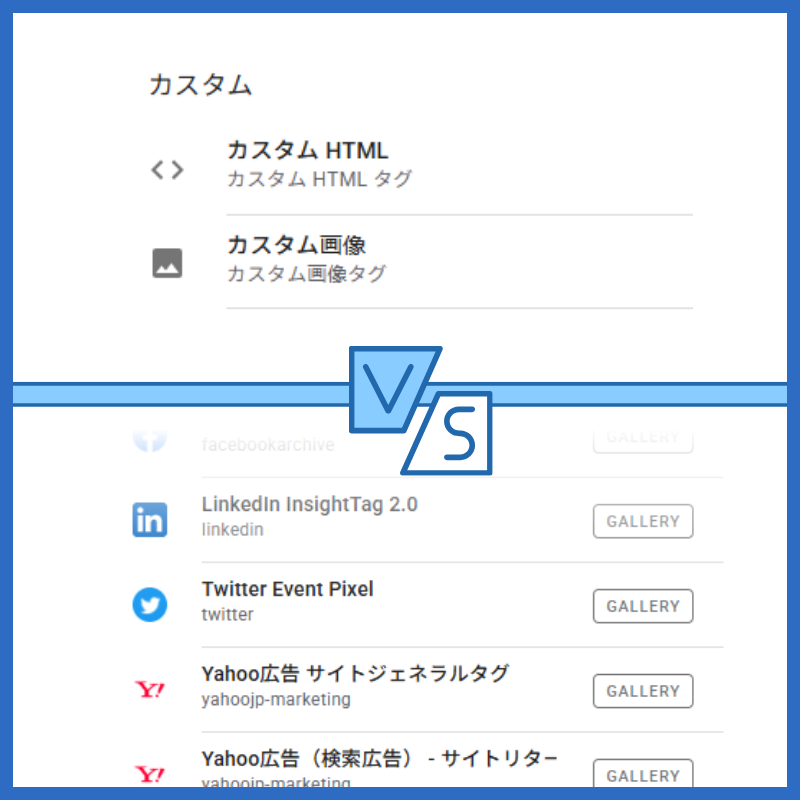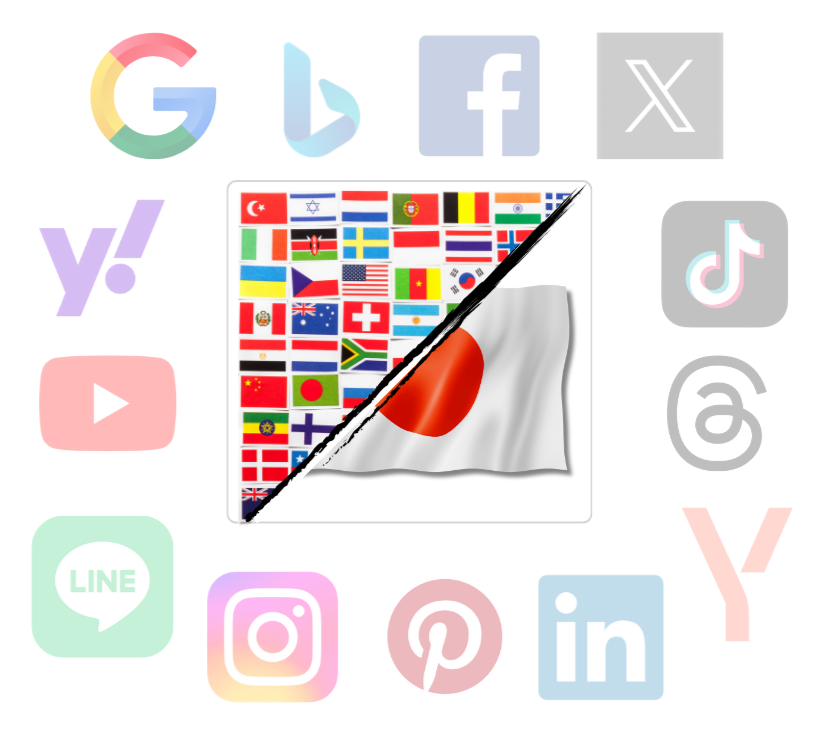
Expanding your digital campaigns into Japan can be a powerful move, but only if you approach it with a solid understanding of the local landscape, and ideally, with boots on the ground. There are unique platforms, behaviors, and expectations that can throw off even the most seasoned marketers.
It is reasonable to begin a market-entry journey into a new country like Japan with winning strategies tested in North America or Europe, but Japanese cultural nuances can be quite different, and a tougher challenge than many expect.
Several industry reports show clear trends that make Japan both exciting and tricky. Below is a breakdown of what’s relevant to digital marketers today, and how to avoid the common missteps.
Japan’s Search Engine Ecosystem
One of the first considerations for global marketers when expanding into a new geography is the area’s search landscape. Like many countries, Japan’s search market is dominated by Google. However, the share of search is noticeably different, a key detail companies should be prepared for.
Google’s share of search in North America and Europe hovers above the 90% followed in many cases by Microsoft Bing, and, in the case of the EU, a notable portion from Yandex.
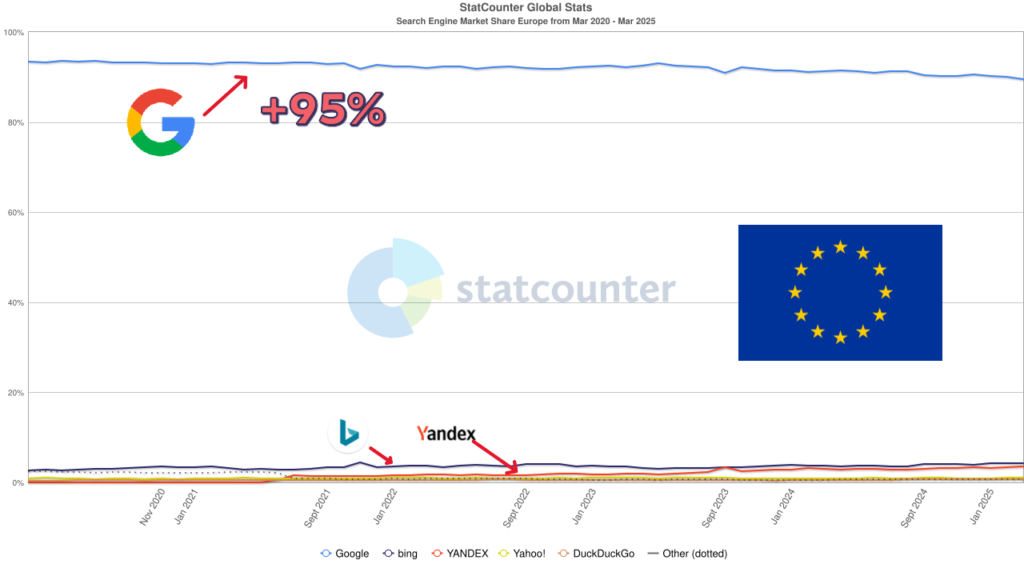
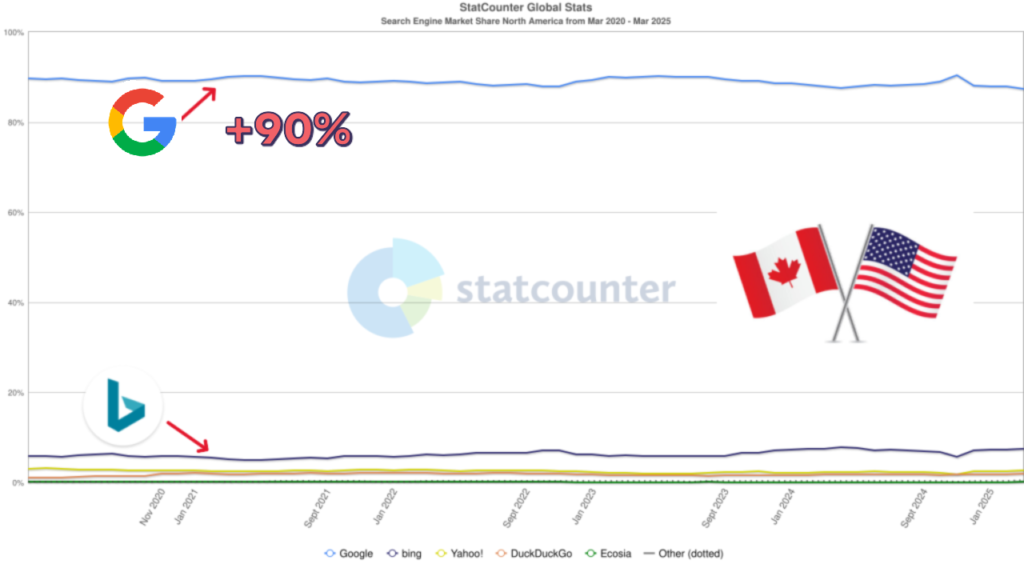
In Japan, however, Google search has a much lower share, closer to 80%, sometimes even less. For the last five years trends have been changing with Google and Bing gaining ground. Yahoo! Japan is well positioned in Japan, not just as a search engine but as a full-service portal. Many users go to Yahoo! Japan for news, weather, shopping, and more — and its ad network reflects that behavior.

Ignoring Yahoo! in your Japan strategy means missing out on a significant audience segment you simply won’t reach elsewhere. Since Yahoo! Japan and LINE merged into LY Corporation (LINEヤフー) in 2023, their combined user base now exceeds 100 million — covering about 80% of Japan’s entire population.

Source: 2025, LY Corporation Media Guide
Digital Shift Towards Video
Recent data on online spending from Dentsu Japan’s yearly report on advertising spending shows that internet advertising now accounts for nearly half of Japan’s total ad spend. The country continues to shift steadily toward digital, with a strong push in areas like video advertising such as YouTube and connected TV.

Source: Dentsu-ho, “2024 Japan Advertising Expenditures”
TV, newspapers, traditional and Digital Out of Home in mediums like mass transit — still command significant attention, and many successful campaigns operate across both digital and traditional formats. That said, the shift to digital is, as in many geographical regions, rather noticeable. And within digital, video is the medium commanding the most attention.
Social Media Landscape – Same Same, But Different
Japan’s social platforms look familiar — Instagram, TikTok, and Twitter (X) are all big players. But there are some unique behaviors:
- LINE is almost ubiquitous. It’s more than a messaging app; it’s a platform for e-commerce, loyalty programs, and direct CRM.
- Twitter (X) usage is higher than in many Western markets, especially for real-time trends and fandoms.
- YouTube and connected TV consumption are growing rapidly, especially among younger viewers.

Source: Nielsen Digital Co., Ltd. / NetRatings Japan, Monthly Total Report, March 2025
Influencer marketing also takes a different shape. Micro-influencers, including virtual influencers or VTubers, are increasingly driving engagement in ways that don’t always map to Western norms.
Virtual influencers are often new territory for foreign marketers. A great example of this phenomenon in Japan is Kizuna AI, one of the first and most popular VTubers (Virtual YouTubers). While Western influencer marketing often emphasizes real-life authenticity and lifestyle relatability, Kizuna AI — a completely virtual character with a digital anime-style avatar — built a huge following on platforms like YouTube and later collaborated with major brands like Lenovo, BANDAI NAMCO, and SoftBank.
※動画が表示されない場合は、ターゲティング Cookieを許可してください。
Add to that how AI is transforming the landscape of paid media. Brands have more levers to pull and drive performance – that includes tools like Google’s and Microsoft’s Performance Max campaigns.
But here’s the caution: cultural context still wins. Automated campaigns that ignore tone, nuance, or platform-specific habits often fall flat. Hence the combination of human insight and AI are necessary to be effective in this market.
Local Expertise Makes a Big Difference
This might be the most important takeaway: Japan rewards local nuance. Translation alone isn’t localization. Ad creative, timing, tone, and even font choices can impact how your message is received.
If you’re serious about Japan, consider working with an agency that knows the local terrain. Whether it’s navigating Yahoo! JAPAN’s ad ecosystem, designing for LINE, or tailoring creative for video platforms, having a partner who’s fluent in both language and context is a massive advantage.
Final Thought
Japan isn’t just another checkbox in your international campaign rollout. It’s a high-potential, high-context market that deserves its own strategy. The channels are familiar, but the way people use them —and the way they respond to messaging — requires local understanding.
If you’ve been running campaigns globally, great. Just don’t assume your winning formula will translate without adjustment. Reports show the opportunities are big here, but only for those who come prepared.

(グローバル)




